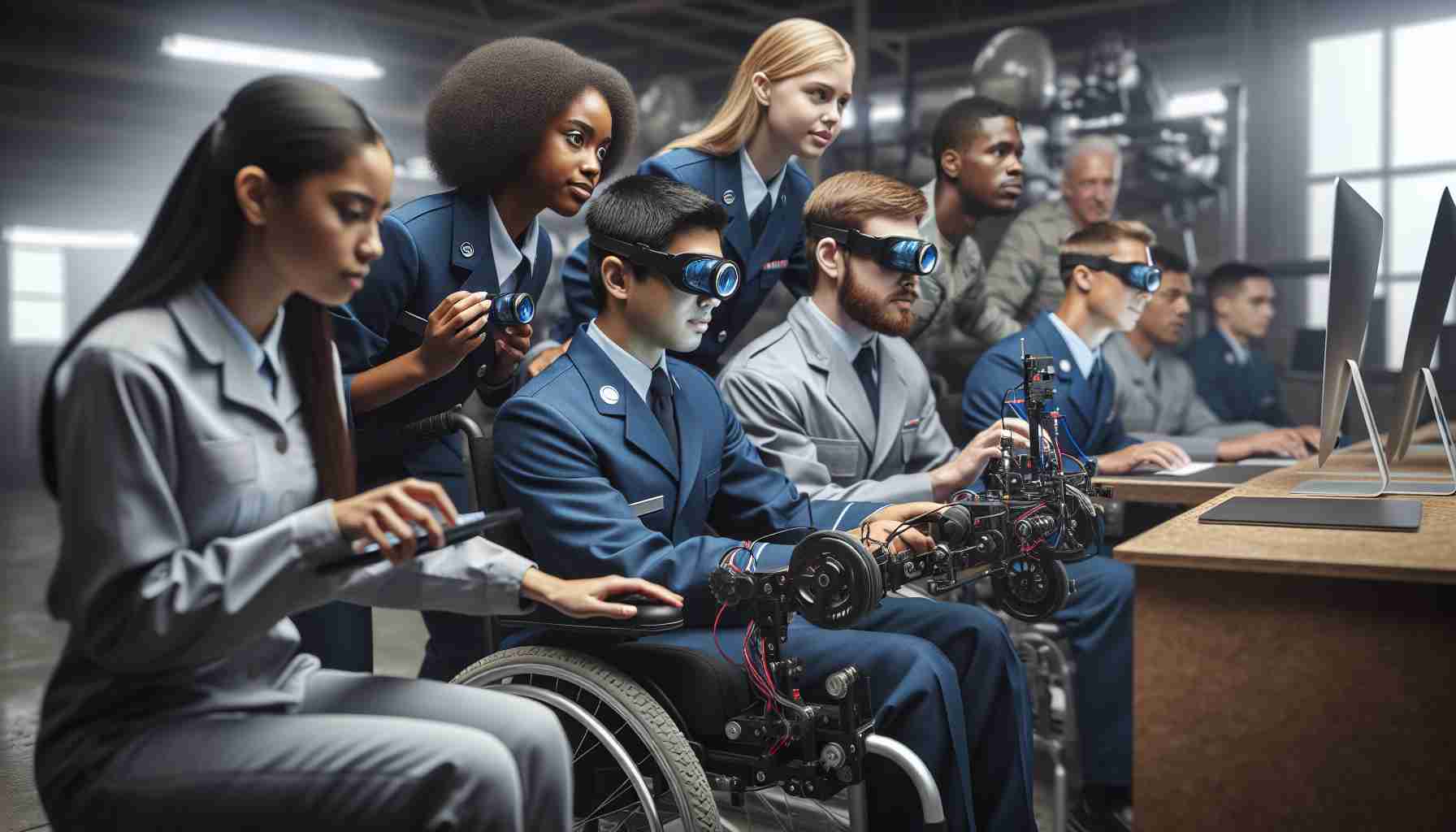In February 2024, Cadet Sam Smith from the United States Air Force Academy is preparing for another test of an eye-controlled wheelchair, a project developed by the Department of Electrical and Computer Engineering. The goal of this project is to create a modern wheelchair that can be controlled through eye movements.
When Colonel Brian Neff joined the Department of Electrical and Computer Engineering in 2018, his aim was to create a technology lab filled with projects that would interest the cadets. A year later, Neff initiated the eye-controlled wheelchair project for senior students.
A Long-Term Project
Over the course of the four-year project, the focus was on developing a wheelchair controller that could be controlled by eye movements. The work began with the reverse engineering of a wheelchair in 2019, when Neff and a cadet from the class of 2020 worked on it during the COVID-19 pandemic. Senior students worked on the project in the following years, providing valuable feedback and guidance to this year’s group, which led to the project’s completion.
Upon completion of the project in June, Cadets Cade Isley, Lucas Jones, Ameen Khan, Luke Ringe, and Sam Smith will be listed as the patent authors for this project.
Humanitarian and Military Needs
The wheelchair has potential applications in the United States Department of Defense. It can provide a “vision-only” mechanism for pilots, ground vehicle operators, or operators of any complex military system. After completion, the wheelchair will be handed over to someone in need, thereby fulfilling humanitarian needs.
“The most unique thing about this project is that we can give something to someone at the end of our work on it,” said Cadet Khan. “That was very enticing for me.” Each of the cadets brought their disciplines and knowledge to the team. Ringe specializes in 3D design and electronics integration, and also tackles problems and conducts reverse engineering of the wheelchair’s interface. Jones and Khan, electrical and computer engineering students like Ringe, are experts in programming and created the necessary software tools for the project. Students Isley and Smith, specializing in Systems Engineering, worked on human factors and project management.
Motivated by Love
One team member was driven by strong emotional motivation. Isley’s cousin was born with a rare mitochondrial disease and now requires a wheelchair to move around school.
“Every day spent with her is a gift,” Isley said. “When I decided to pursue Systems Engineering, focusing on human factors, I learned about projects I could work on optimizing systems and designing projects that make people’s lives easier. I thought about my little cousin. She may not be able to come to Colorado to use the wheelchair, but it can make someone similar’s life easier.”
FAQ Section Based on the main topics and information presented in the article:
1. What is the role of the Department of Electrical and Computer Engineering in the eye-controlled wheelchair project?
– The Department of Electrical and Computer Engineering is responsible for developing the eye-controlled wheelchair project.
2. What is the potential application of the wheelchair?
– The wheelchair has potential applications in the United States Department of Defense, providing a “vision-only” mechanism for pilots, ground vehicle operators, or operators of complex military systems. It also has humanitarian applications for those in need.
3. Who will be listed as patent authors for this project?
– Cadets Cade Isley, Lucas Jones, Ameen Khan, Luke Ringe, and Sam Smith will be listed as the patent authors for this project.
4. What skills and knowledge did the cadets bring to the project?
– Ringe specializes in 3D design and electronics integration, as well as conducting reverse engineering of the wheelchair’s interface. Jones and Khan, electrical and computer engineering students like Ringe, are experts in programming and created the necessary software tools for the project. Students Isley and Smith, specializing in Systems Engineering, worked on human factors and project management.
5. What was the team’s motivation for working on the project?
– One team member was strongly motivated emotionally. His cousin was born with a rare mitochondrial disease and now requires a wheelchair to move around school. The team’s motivation was to design projects that make people’s lives easier.
Key Terms or Jargon Definitions Used in the Article:
1. Department of Electrical and Computer Engineering – A department in an academy or institution that deals with research, projects, and development in the field of electrical and computer engineering.
2. Wheelchair – A device that enables individuals with disabilities to move, usually through hand or eye-controlled interfaces.
Suggested Related Links to the main domain (not subpages) in the format of link name, but only if you are certain the URL is 100% correct, do not add example.com links. Longer URL => use only links to the main domain, not subpages.
1. United States Air Force Academy
The source of the article is from the blog dk1250.com
